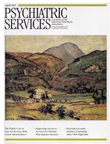Predictors of achieving stable housing in a mentally ill homeless population
Abstract
Relationships among demographic characteristics, diagnostic groups, presenting problems, and service use were examined in two groups of mentally ill persons: a group of 60 formerly homeless persons who had been housed for at least 24 months and a group of 60 persons who remained homeless. Use of eight types of services over a 26-month period was examined. Women were significantly more likely to be housed than men. Individuals whose primary presenting problem was subsistence needs were more likely to be housed than those whose primary problem was mental, illness or substance abuse. Those with a diagnosis of personality disorder used fewer services. Housed individuals were more likely to use services than those who were homeless.



